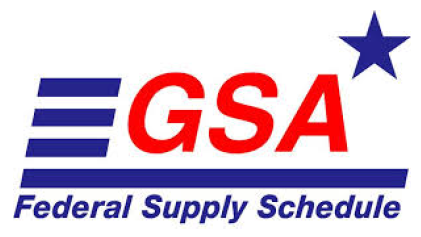Introduction
Government contracting is a complex landscape where the readiness and maturity of technology play crucial roles in project evaluation and procurement decisions. Technology Readiness Levels (TRLs) are a systematic metric that helps assess the development stage of a technology. This blog aims to provide members with an in-depth understanding of TRLs, their application in government contracting, and their importance in making informed procurement decisions.
What are Technology Readiness Levels (TRLs)?
Technology Readiness Levels (TRLs) are a scale from 1 to 9 used to measure the maturity of a particular technology. Developed by NASA in the 1970s, TRLs provide a clear framework to understand and communicate the progress of technology development. Here’s a brief overview of each level:
- TRL 1: Basic principles observed and reported.
- TRL 2: Technology concept and/or application formulated.
- TRL 3: Analytical and experimental critical function and/or characteristic proof of concept.
- TRL 4: Component and/or breadboard validation in a laboratory environment.
- TRL 5: Component and/or breadboard validation in a relevant environment.
- TRL 6: System/subsystem model or prototype demonstration in a relevant environment.
- TRL 7: System prototype demonstration in an operational environment.
- TRL 8: Actual system completed and qualified through test and demonstration.
- TRL 9: Actual system proven through successful mission operations.
Detailed TRL Descriptions and Examples
Understanding the nuances of each TRL can significantly enhance the procurement process. Here’s a deeper dive into each TRL with specific examples and case studies:
- TRL 1: At this stage, scientific research is beginning. For instance, fundamental research on new materials for battery storage might be conducted in a laboratory setting.
- TRL 2: Here, practical applications of the basic principles are identified. An example could be conceptualizing a new type of solar cell based on the newly discovered material.
- TRL 3: Active research and development are underway. For example, initial experiments are conducted to demonstrate the feasibility of the new solar cell in a controlled environment.
- TRL 4: At this level, the technology is tested in a laboratory setting. For instance, a prototype solar cell is tested to validate its efficiency under various conditions.
- TRL 5: The technology is tested in a relevant environment. An example could be deploying the prototype solar cell in a small-scale solar panel setup to evaluate its performance.
- TRL 6: A system model or prototype is demonstrated in a relevant environment. For instance, a full solar panel system incorporating the new cells is tested in an actual operational setting, such as a solar farm.
- TRL 7: The prototype system is demonstrated in an operational environment. For example, the solar panel system is installed on a commercial building to monitor its performance over time.
- TRL 8: The technology is completed and qualified through rigorous testing. For instance, the solar panel system undergoes extensive field trials to ensure reliability and efficiency.
- TRL 9: The technology is proven through successful mission operations. An example could be the widespread commercial deployment of the solar panel system, demonstrating its success and reliability in various environments.
The Role of TRLs in Government Procurement
In government contracting, TRLs serve as a critical tool for evaluating the viability and readiness of technology solutions proposed by contractors. They help procurement officials make informed decisions by providing a standardized assessment of technological maturity. Here’s how TRLs are typically used in this context:
- Assessment of Proposals: TRLs help in evaluating the maturity of technologies proposed by contractors. This ensures that the technology is at an appropriate development stage for the project’s requirements.
- Risk Management: By understanding the TRL, procurement officials can better assess the risks associated with adopting a new technology. Higher TRLs generally indicate lower development risk.
- Funding Decisions: TRLs can guide funding allocations by identifying which projects are ready for full-scale implementation and which need further development.
- Milestone Tracking: Using TRLs, project progress can be tracked more effectively, ensuring that technological development aligns with project timelines and goals.
Procurement Checklists Incorporating TRLs
To effectively utilize TRLs in procurement processes, consider the following steps:
- Define Technology Requirements: Clearly outline the technology needs and objectives of the project.
- Identify Appropriate TRLs: Determine the TRL range that fits the project’s risk tolerance and development stage.
- Evaluate Proposals: Use the TRL scale to assess the maturity of the proposed technologies and their alignment with project requirements.
- Mitigate Risks: Incorporate TRL assessments into risk management strategies to address potential challenges early in the project lifecycle.
- Monitor Progress: Regularly review TRL advancements to ensure the project remains on track and technological development meets the expected milestones.
Practical Checklist Example
Here’s a practical checklist to help integrate TRL assessments into your procurement processes:
- Requirement Definition:
- Have you clearly defined the technology needs and project objectives?
- Have you outlined the desired outcomes and performance metrics?
- TRL Identification:
- What is the current TRL of the technology?
- What TRL range is acceptable for your project’s risk tolerance?
- Proposal Evaluation:
- Does the proposal align with your TRL requirements?
- Are there supporting documents or evidence validating the TRL?
- Risk Mitigation:
- Have you identified potential risks associated with the TRL?
- Have you developed strategies to mitigate these risks?
- Progress Monitoring:
- How will you track TRL advancements?
- What are the milestones and timelines for TRL progression?
Conclusion
Understanding and applying Technology Readiness Levels in government contracting is crucial for making informed procurement decisions. TRLs provide a standardized framework to assess the maturity and risk of technology projects, ensuring that government contracts are awarded to viable and reliable solutions. By integrating TRLs into the procurement process, government agencies can enhance project outcomes, reduce risks, and ensure the successful implementation of advanced technologies.
For more information and access to exclusive member resources, be sure to explore our detailed guides, checklists, case studies, and upcoming webinars on our portal.








